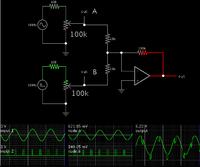fadverd
Junior Member level 3

- Joined
- Apr 22, 2013
- Messages
- 28
- Helped
- 0
- Reputation
- 0
- Reaction score
- 0
- Trophy points
- 1,281
- Activity points
- 1,529
hi friends
i am doing final year project of design of active noise cancellation headphones.. i have stucked at point.. and does't find solution. and too worried cause of limited time ahead..:-( so plzz any body can help me.. i ll be much thank full
regards
Fleming
i am doing final year project of design of active noise cancellation headphones.. i have stucked at point.. and does't find solution. and too worried cause of limited time ahead..:-( so plzz any body can help me.. i ll be much thank full
regards
Fleming










